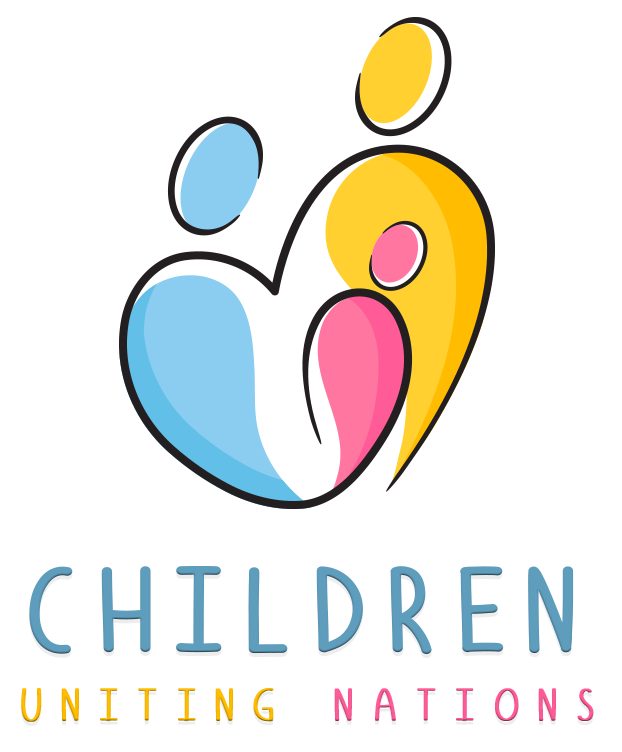Children in foster care systems reflect some of the most vulnerable experiences in any society. Government agencies, nonprofit groups, and international organizations collect and publish data to track these realities, identify gaps, and improve policies.
Foster care trends carry wide public impact across child welfare, adoption, mental health, and family reunification efforts. In 2025, new attention falls on the size, needs, and outcomes of foster populations in the United States and abroad.
This article brings verified foster care statistics using the latest available reports. It covers the most recent U.S. federal foster care totals, entry and exit numbers, average time in care, adoption trends, and demographic breakdowns.
It also examines current international data where available. Gaps in global data reporting still affect full comparisons, but key UNICEF figures and national overviews offer some clarity. Numbers cited throughout come directly from government sources and reputable research institutions.
Understanding the size and structure of foster care systems allows readers to evaluate where resources go, how policies evolve, and what remains unresolved.
Whether the focus is on reunification, long-term care, or adoption, foster care numbers define what children face in 2025 and how systems measure their outcomes. The following sections present those numbers in full.
Methodology
All statistics in this article are based on real data gathered from official agencies, federally mandated reports, and published research. No estimates or predictive models were used. Each figure reflects the most recent data available between 2022 and 2025, with all sources accessible to the public.
U.S. national statistics were drawn directly from AFCARS, the Child Welfare Information Gateway, and state-level datasets from the KIDS COUNT Data Center. Adoption breakdowns and family data came through AdoptUSKids and the Congressional Coalition on Adoption Institute (CCAI). Additional details on state totals, foster home counts, and exit outcomes were sourced from The Imprint, Annie E. Casey Foundation, and House of Providence.
Mental health data came from peer-reviewed research hosted by the National Library of Medicine, with condition-specific insights published by ScienceDaily and Mental Health First Aid. Global estimates on foster and institutional care were taken from UNICEF and the International Foster Care Organisation (IFCO).
Total Number of Children in Foster Care (2025)
U.S. Nationwide Total
As of early 2025, the most recent count confirms that 390,000 children are currently in foster care across the United States. This figure comes from validated reporting through the Child Welfare Information Gateway and consolidates trends noted across late 2023 and early 2024.
The number marks a rise compared to 2022, when 368,530 children were in care. Although the increase is notable, it still falls below the 2018 peak of 437,000 children. Historical data reflects a consistent pattern of fluctuations depending on policy enforcement, family court delays, drug epidemics, and community economic pressures.
U.S. Foster Care Totals Over Time
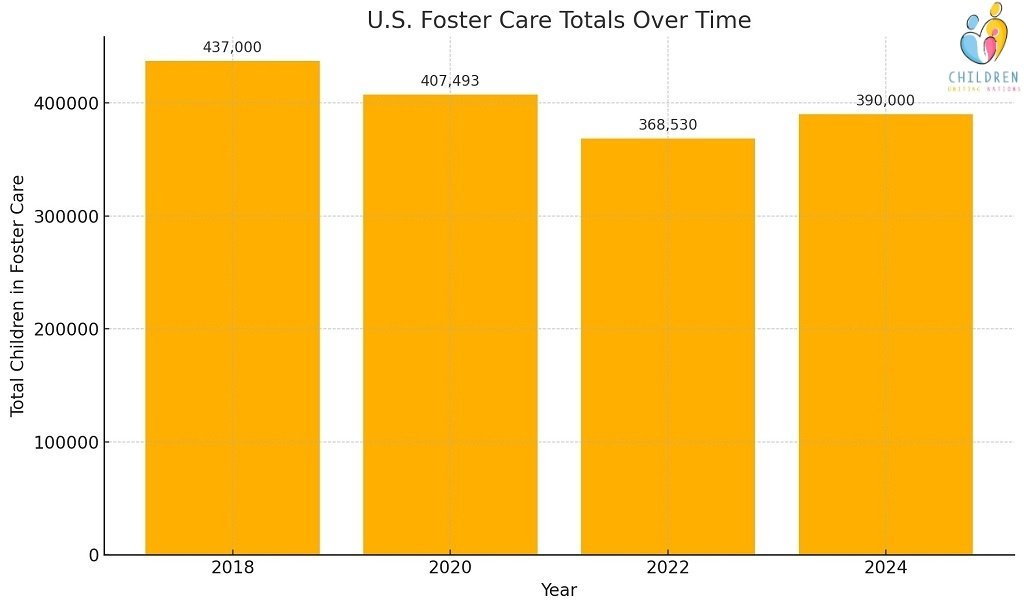
- Rise in child welfare investigations in several states
- Delays in permanency due to overwhelmed family courts
- Increases in substance-related removals, especially in rural areas
- Fewer available kinship placements leading to longer foster stays
The number of children in care does not remain stable year to year. Each case carries its own timeline, depending on court rulings, family reunification progress, adoption finalizations, or aging out.
Global Foster Care Estimates
Accurate worldwide statistics remain difficult due to non-uniform data collection. However, UNICEF and IFCO have provided structured reporting covering the majority of the global child population.
Key Global Figures
- 2.7 million children are in residential or alternative care worldwide.
- An estimated 120 children per 100,000 are in foster or institutional care across 84% of the child population tracked.
- Foster systems in low-income countries rely heavily on informal kinship care, which remains underreported.
Global Gaps and Limitations
- Several countries in Asia, Africa, and Latin America lack centralized child welfare agencies.
- Data collection methods vary between NGOs, ministries, and family services units.
- Many foster systems abroad operate under religious, tribal, or localized frameworks with minimal documentation.
Demographic Breakdown of Children in Foster Care
Age Distribution
Children in care span all developmental stages. Based on 2024 records, the average child in foster care is about eight years old. Agencies report significant representation across the spectrum, including infants and youth close to legal adulthood.

Children over 18 remain in care due to extended services available in several states. Transitional programs give access to housing, mental health treatment, job training, and tuition waivers through age 21 in certain jurisdictions.
Gender Breakdown
Foster care populations are nearly evenly split by sex. Boys slightly outnumber girls, but not by a significant margin. The most recent AFCARS data confirms:
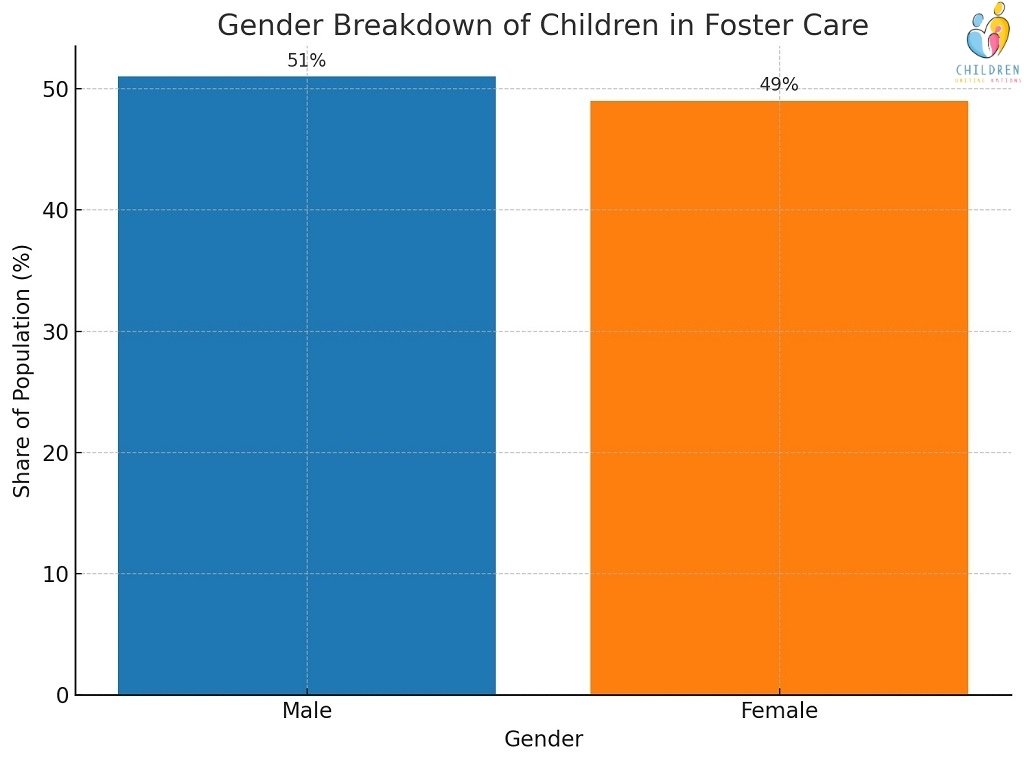
No current federal tracking system includes intersex or nonbinary categories within standard reports. Most state databases remain binary by default.
Racial and Ethnic Composition
Demographics reveal consistent racial disparities. Black and Native American children remain overrepresented relative to their share of the general population. White and Hispanic children account for the majority, but disparities vary state to state.
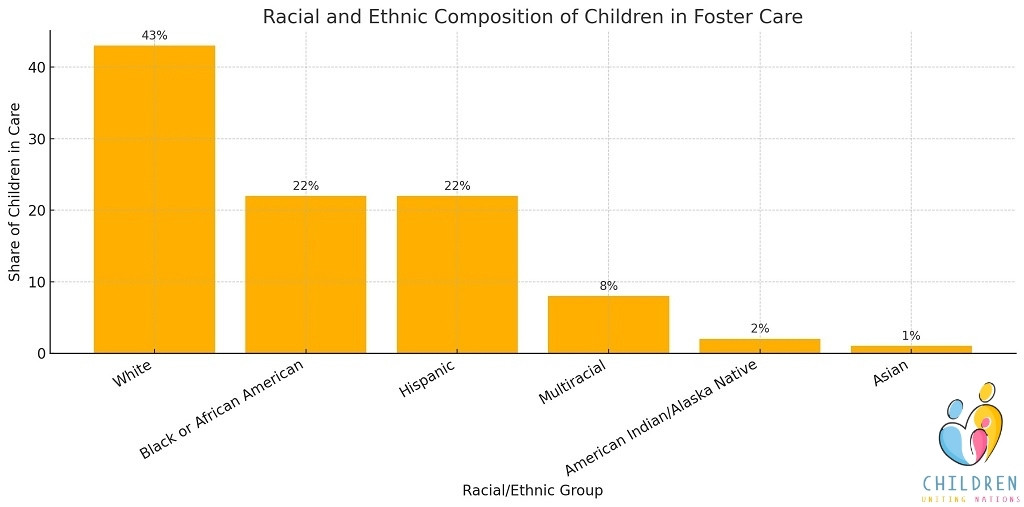
Some groups face disproportionate removal rates due to poverty-related investigations, biased reporting practices, or lower access to preventive family services.
Additional Statistics
- About one-third of children in foster care live with at least one physical, developmental, or behavioral disability.
- An estimated 30% of older youth in care identify as LGBTQ+.
State-by-State Foster Care Numbers (U.S.)
Numbers vary sharply across states due to population size, removal practices, court capacity, and availability of foster homes. California reports the highest number of children in care, followed by Florida and Texas. Some smaller states and territories have far fewer children in custody.
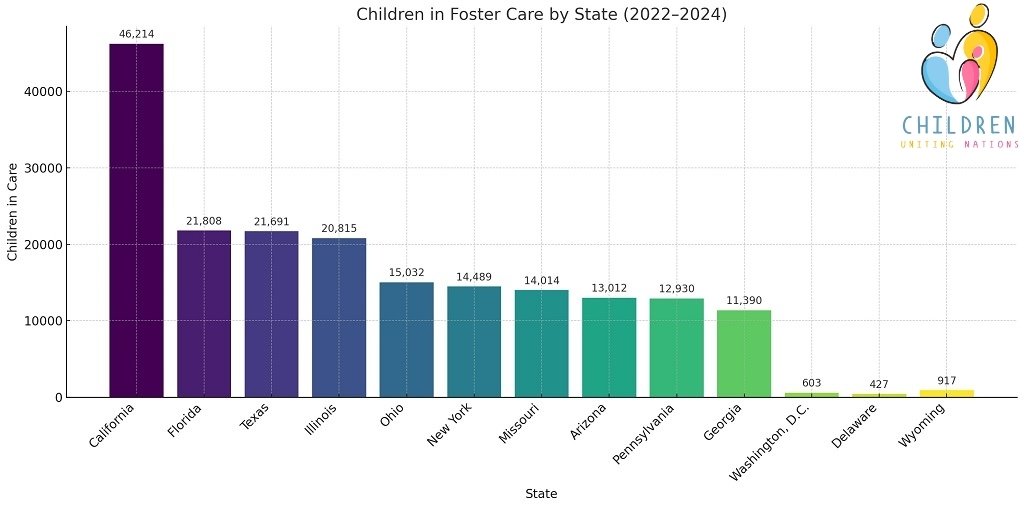
Larger states do not always rank highest per capita. In rural states, lack of services can lead to more removals and longer foster stays. In urban systems, capacity issues slow exits and reunifications.
Placement Settings and Living Situations
Children in foster care live in different environments depending on court orders, caseworker availability, and family resources. Most children live with licensed non-relative foster families, though many are also placed with relatives or close family friends.
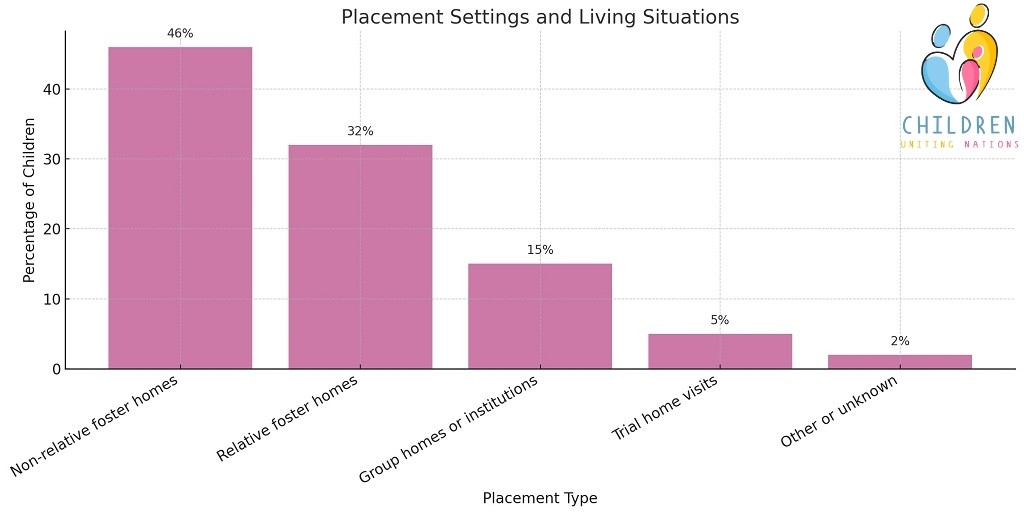
Not all placements remain stable. Children can move placements due to behavioral issues, caregiver burnout, or agency failures. On average, each child experiences two placements while in care. Over one-third move three or more times.
Duration of Stay in Foster Care
Time in care varies based on case goals, court timelines, and family conditions. The federal system reports average foster care duration as slightly over 21 months. Some children stay briefly. Others remain for several years due to failed reunification, unfinalized adoptions, or court backlogs.
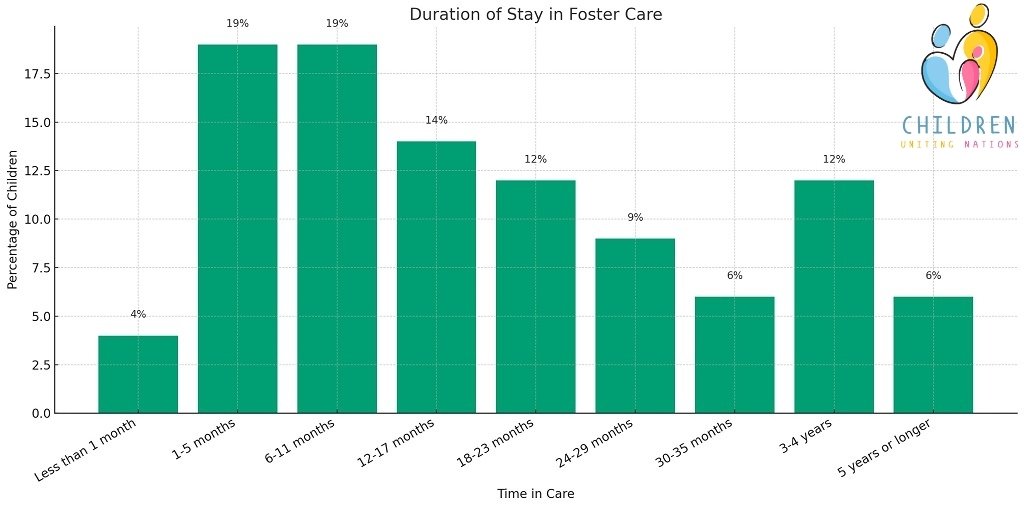
Foster Care Outcomes and Exits
Children exit foster care in different ways. Some reunite with parents. Others move to guardianship, adoption, or age out without permanent families. Each exit type brings different long-term risks and opportunities.
In 2021, over 19,000 youth aged out of foster care without permanent connections. By 2024, the number remained above 18,000 annually. Outcomes for those youth are often poor.
- Up to 46% face homelessness by age 26
- Around 50% will encounter the juvenile or adult justice system
- Over 70% of girls who age out become pregnant by 21
- Less than 3% will complete a four-year college degree
Mental Health and Developmental Outcomes
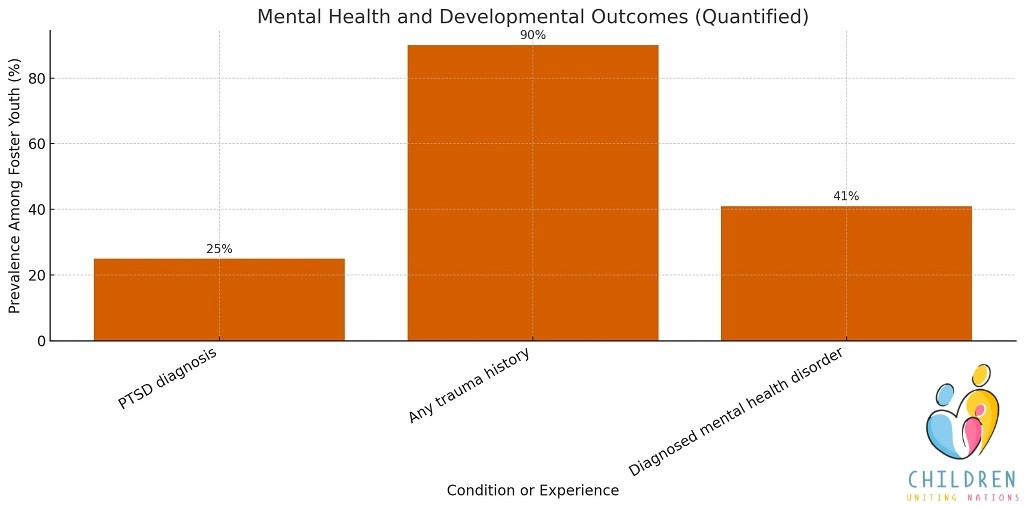
Mental health concerns are widespread in foster care. Children often carry trauma linked to abuse, neglect, or abrupt separation. Many require clinical treatment, therapy, or ongoing psychiatric support.
- ADHD diagnosis – 3x more likely than general population
- Developmental delays – 2x more likely
Educational Impact of Foster Care
Children in care face major educational disruptions. School moves, placement instability, and emotional strain reduce graduation rates and block access to higher education.
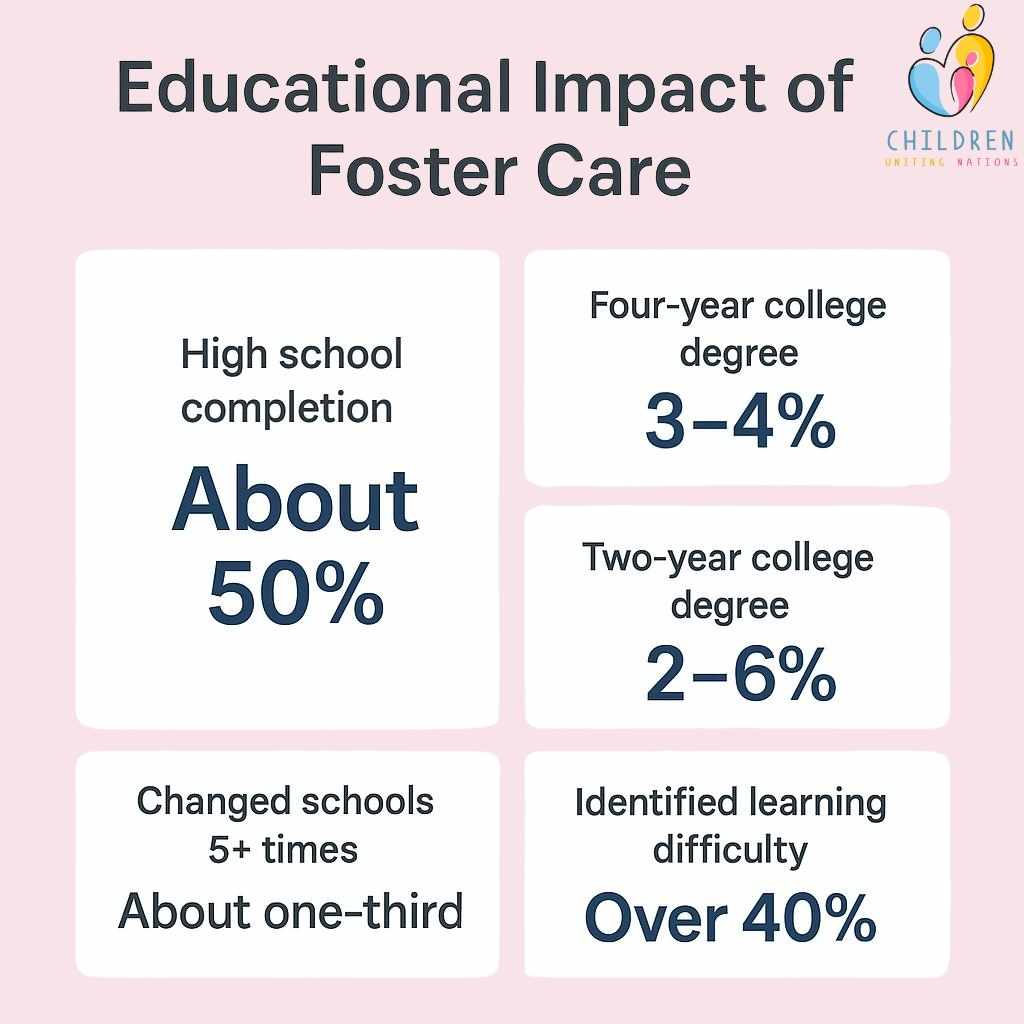
Nine states report less than half of foster youth graduate high school in four years. Mobility, trauma, and gaps in academic records remain common barriers. Federal law requires educational stability plans, but implementation remains inconsistent.
Licensed Foster Homes and Caregiver Data
Foster care cannot operate without caregivers. Most children live with licensed foster families. Some live with relatives or in group settings. As of 2020, there were 214,421 licensed foster homes across the U.S.
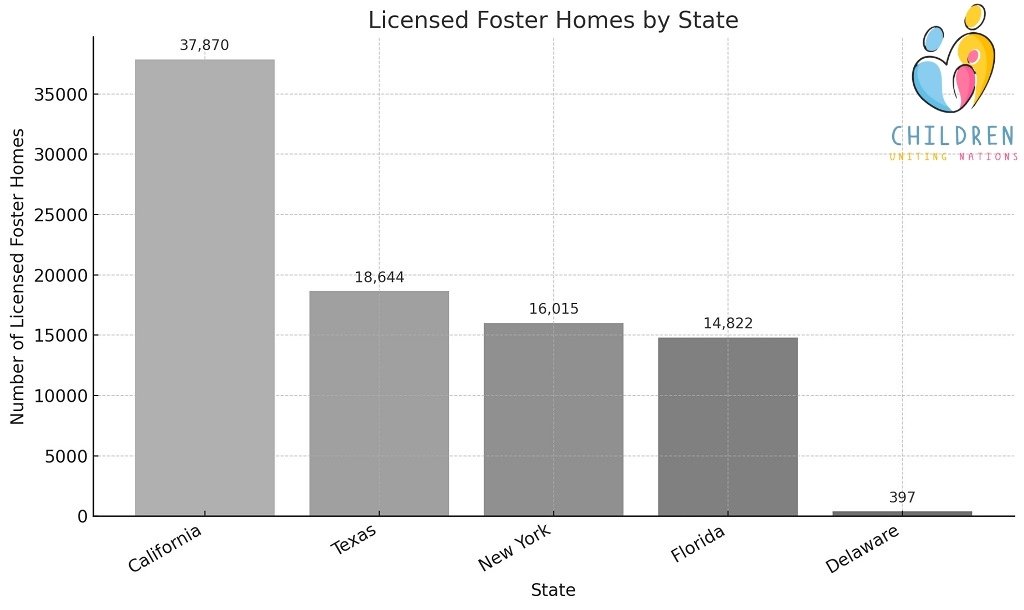
Foster parents include married couples, single adults, and relatives. About 32% are single caregivers. Others serve through public agencies or private nonprofits.
Adoption Statistics and Waiting Children
When reunification is impossible, adoption becomes the goal. Children waiting for adoption often face long delays, especially if older or part of a sibling group.
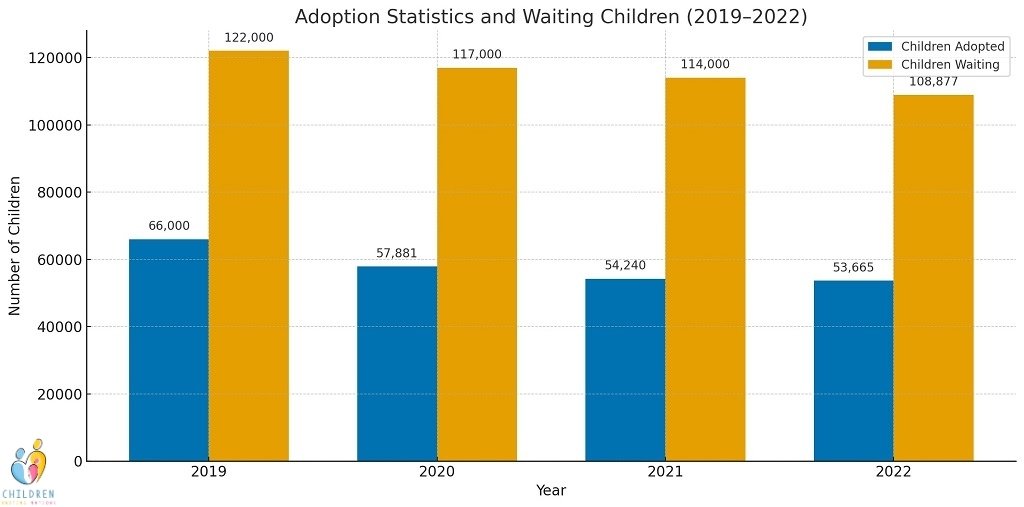
- 55% of children adopted were placed with their foster parents
- 34% were adopted by relatives
- 29% were age 9 or older at the time of adoption
- 60% of waiting children have already spent over two years in care
Family Connections and Sibling Relationships
Maintaining family ties remains a key goal of foster care. Most children have living parents or siblings. Agencies attempt to keep siblings together, or at minimum arrange regular contact.
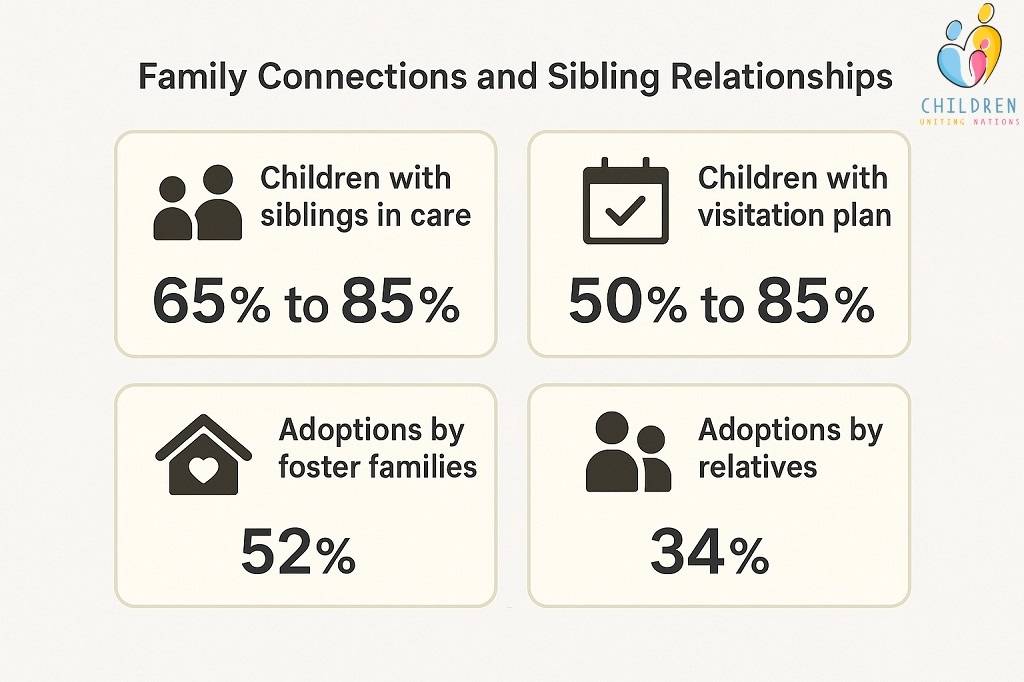
In practice, siblings are often separated. Not all homes can accept multiple children. Reunification efforts become harder with split placements. State policies vary, but federal guidelines emphasize sibling connections.
Conclusion
Foster care in 2025 remains shaped by large numbers, long stays, and complex needs. The U.S. system holds 390,000 children, each with their own trajectory. Reunification is common but not guaranteed. Adoption faces delays. Aging out without support continues to harm youth into adulthood.
Across demographics, disparities persist. Black, Native, and LGBTQ+ youth face higher removal rates. Disabilities and trauma define large parts of the population. Foster care affects school, health, and future outcomes more than most people ever see.
Family-focused reforms, investment in mental health, consistent caregiver training, and expansion of kinship support will define the system’s direction. The statistics only show the outlines. Real answers depend on the choices communities and agencies make next.
